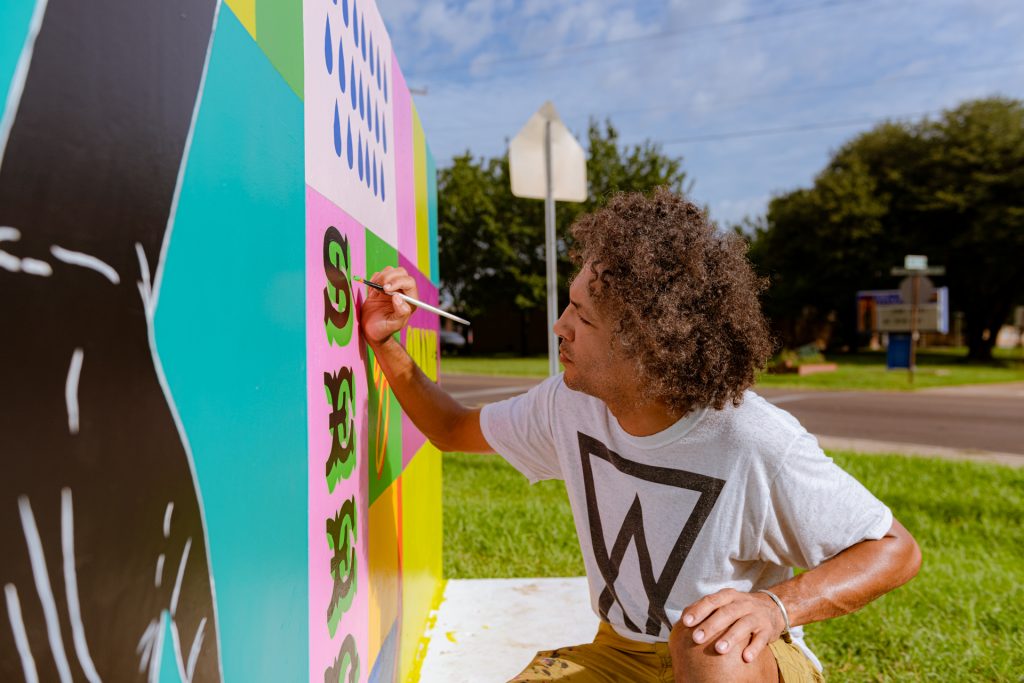
By Anita Contini and Stephanie Dockery
Can creative art installations that focus on healthy food options lead to a future of healthier eating? Over the past three years, the City of Jackson, Mississippi, has been collaborating with artists, residents, farmers, gardeners, and landscape architects to find out.
Mississippi has a rich agricultural past and annually exports poultry, soybeans, corn, cattle, and catfish across the U.S. But despite being an agricultural world leader, 40 percent of Mississippians suffer from obesity due to inaccessibility to fresh food and vegetables. The state’s capital city, Jackson, is lined with “food swamps” and “food deserts.” “Food swamps” are areas where fast food chains and gas stations filled with processed foods are far more common and easier to access than markets with fresh produce. “Food deserts” are areas where there are limited healthy food options. The city’s food woes can be traced to a legacy of segregation embedded into the city’s urban design, discriminatory food policies, underinvestment in the quality of life of residents, and one of the highest grocery taxes in the country. In essence, Mississippians suffer from unacceptable food options.
Seeking creative solutions to inspire change, in 2018 Jackson Mayor Chokwe Antar Lumumba applied to the Bloomberg Philanthropies Public Art Challenge, an initiative to support public art projects that address complex local issues. In October 2021, Jackson community members gathered in outdoor settings to celebrate the three years of progress of their Public Art Challenge award-winning effort, the Fertile Ground Project: Inspiring Dialogue About Food Access.
The ambitious public art project featured 13 installations across the city along with public-private collaborations to reduce food insecurity, like Fertile Ground Farm, the first urban organic farm within 100 miles. Each of these efforts highlights Southern food as a reflection of culture, economic investment, and a way to bring people together.
Here is a closer look at six ways that Jackson’s creative community brought the Fertile Ground Project to life:
1. Tapping local film talent, the team produced “Fertile Ground,” a PBS documentary that illuminates the historic system of segregation that created and supported food access inequity in Jackson, and spotlight the creative efforts of local residents to build more resilient food systems. This documentary brought awareness to the policy decisions and transit systems in Jackson that continue to exacerbate food inequity. Recently, The “Fertile Ground” documentary won a Southeast Emmy for its groundbreaking work.
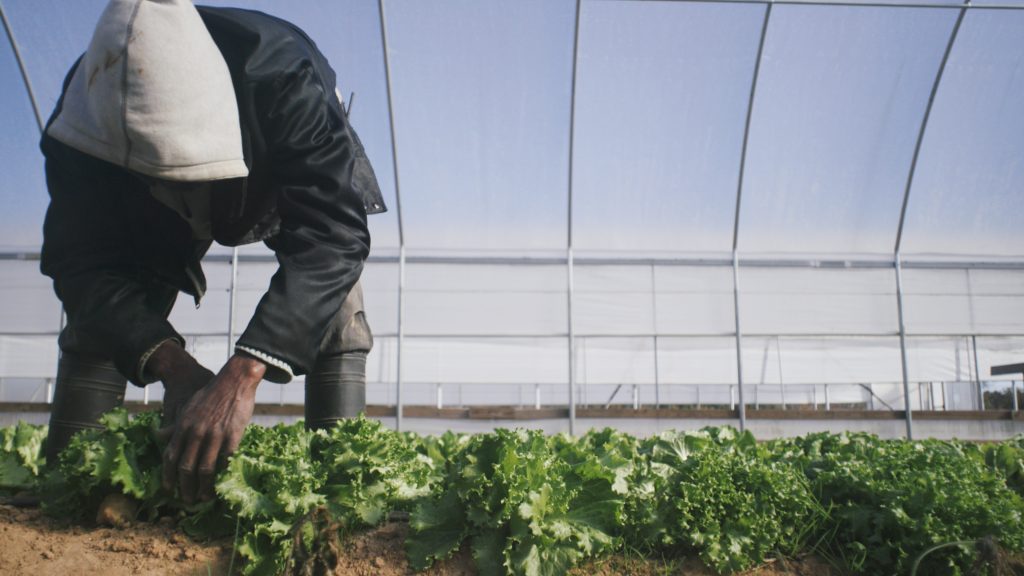
2. In partnership with parents, children, and school officials at the Galloway Elementary School, as well as neighboring nonprofits and faith-based groups, the Jackson Fertile Ground Project team transformed a vacant lot next to the school into the “The Living Room Learning Garden.” Designed by Mississippi State University Center for Architecture, the garden includes plots for each grade level to learn to grow fresh fruits, vegetables, and flowers, and the children can also bring food home to their families. The Learning Garden is located in one of Jackson’s largest food swamps and directly faces a fast-food corridor. “The strategic goal is healthy citizens,” said Mayor Lumumba during the ribbon cutting ceremony at Galloway Elementary. “This Learning Garden is helping Jackson build a vision for a new economy, based on sustainable development goals, quality of education, equity of infrastructure, and providing fresh fruits and vegetables to people…I’m proud that Jackson is providing leadership to Mississippi, and to the world, with this art project.”
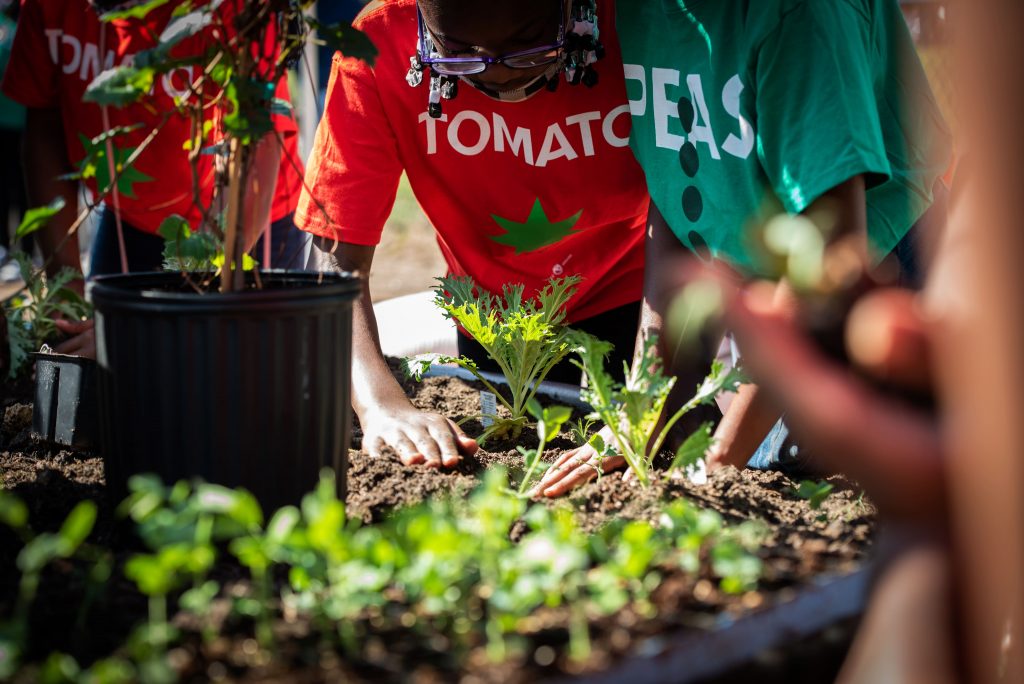
3. Ecoshed, a new co-working space for local businesses catalyzed by the Fertile Ground Project, acts as a research facility for teaching farmers and community members about food production and supports the creative economy in Jackson as a mixed-use incubator. The space is designed to demonstrate sustainable building technologies or “green infrastructure” through urban farming, rainwater recycling, passive energy systems, carbon sequestration, and waste recycling. Ecoshed is housed in a recently restored building along Jackson’s train tracks and artists have painted dynamic murals on the building’s exterior.
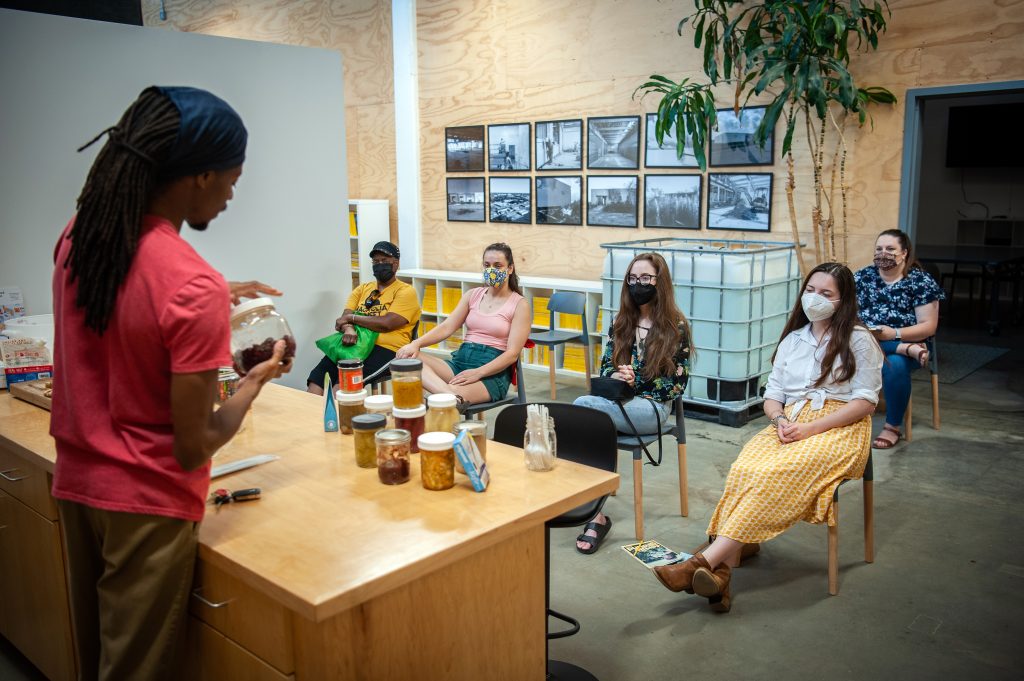
4. Next door to Ecoshed is the Fertile Ground Farm, a regenerative urban farm that grows organic, chemical-free produce, which is strategically placed within one of Jackson’s food deserts to provide hyperlocal produce for residents and neighboring restaurants. The site not only provides the community with food, but it also serves as an important hub for food education by doubling as a research facility that teaches farmers and residents about the importance of regenerative food production. This is the only organic urban farm within 100 miles. It grows food and flowers including lettuce, peas, tomatoes, corn, and strawberries.

5. Murals and large-scale paintings have transformed sites across Jackson into outdoor art installations. The installations add color and energy to local businesses and position Jackson as a creative hub, all while bringing visual awareness to the issue of food access. Adrienne Domnick’s “Mama Rose Kitchen” has spurred increased business interest, reversing the trend of vacancy in this historically prosperous African American neighborhood. Lucie Cooper’s mural “Reach” was erected as part of the team’s response to COVID-19. 55 local artists applied for the opportunity to create five mural installations around Jackson, providing social distancing opportunities for people to enjoy art in their neighborhoods, within parks, and previously vacant spaces.
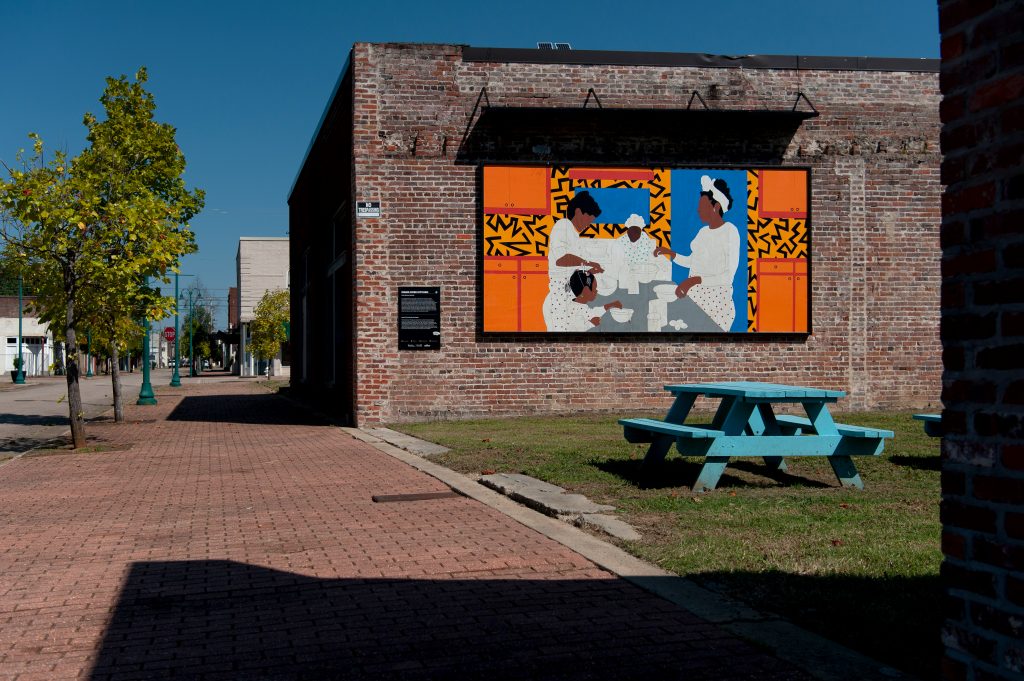
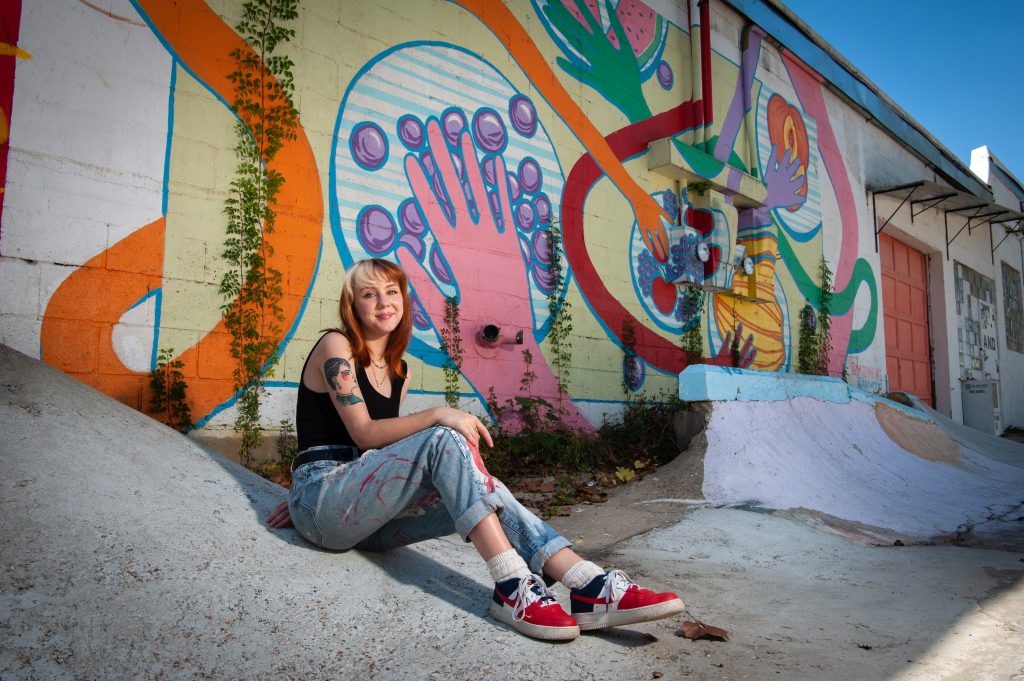
6. To encourage foot traffic and community in activate downtown Jackson, the architectural office of Jonathan Tate transformed Mississippi’s oldest park, Smith Park, into a dynamic location for gatherings and events. The installation is called “Ground Notations” and is in front of the state capitol, City Hall, and the Governor’s residence. It features beautifully landscaped gardens and edible plants, which help to feed a houseless community and offer space for seating and events for downtown lunch diners. The adjacent street to the installation is decorated with a pattern reminiscent of row crops, a nod to the approximately 11 million acres of land in Mississippi that are dedicated to agriculture and industrial farming.

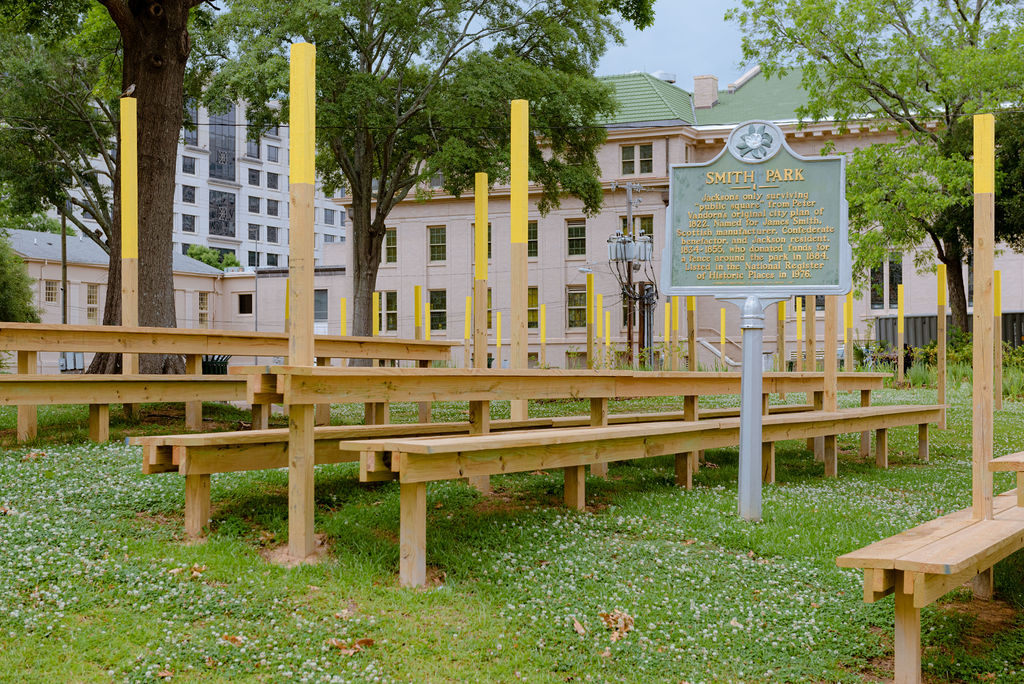
The COVID-19 pandemic has underscored the interrelationship of equity, public space, health, and food supply chains in America’s infrastructure. Now is the time to treat food insecurity as a public health crisis and to implement solutions. Public art installations and activations developed by the Fertile Ground Project showcase the City of Jackson’s creativity and vibrance, while generating important conversations around the national issue of unequal access to healthy foods. Through art, the people of Jackson are inspiring and empowering the community to reimagine a healthier, more equitable food future across Mississippi and beyond.